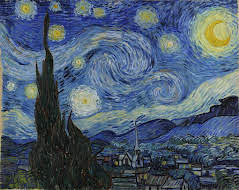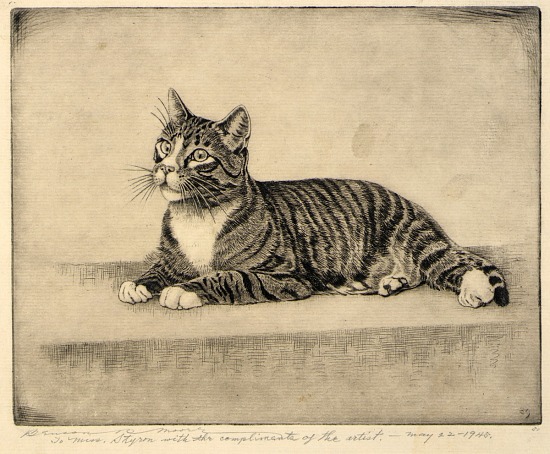The Timeless Beauty of Vincent van Gogh’s “Starry Night”
One of the most iconic and beloved works of art in the world, Vincent van Gogh’s “Starry Night” continues to captivate audiences with its mesmerizing beauty and emotional depth. Painted in 1889 during his time at the Saint-Paul-de-Mausole asylum in Saint-Rémy-de-Provence, France, this masterpiece is a testament to van Gogh’s unique artistic vision and profound connection to nature.
At first glance, “Starry Night” depicts a tranquil night sky filled with swirling clouds and bright stars. The crescent moon shines brightly against a deep blue background, casting a mystical glow over the landscape below. Van Gogh’s expressive brushstrokes and vibrant colors create a sense of movement and energy, as if the sky itself is alive with emotion.
But beyond its striking visual appeal, “Starry Night” also reveals van Gogh’s inner turmoil and struggles with mental health. The turbulent sky mirrors his own turbulent mind, while the dark cypress tree in the foreground symbolizes death and eternity. Despite these darker undertones, there is also a sense of hope and beauty in the painting, as if van Gogh found solace and comfort in the night sky.
Over a century after its creation, “Starry Night” continues to inspire artists, art lovers, and dreamers around the world. Its timeless appeal lies in its ability to evoke powerful emotions and spark imagination. Van Gogh once wrote that he hoped his paintings would bring joy to others, and “Starry Night” certainly fulfills that wish by enchanting viewers with its celestial magic.
As we gaze upon this masterpiece today, we are reminded of the enduring legacy of Vincent van Gogh and the transcendent power of art to touch our hearts and souls. “Starry Night” remains a shining beacon of creativity and beauty that will forever illuminate the night sky of our collective imagination.
Exploring the Mysteries of Vincent van Gogh’s ‘Starry Night’: Origins, Inspirations, and Impact
- What is the story behind Vincent van Gogh’s ‘Starry Night’?
- When was ‘Starry Night’ painted and where?
- What inspired Vincent van Gogh to create ‘Starry Night’?
- What is the meaning or symbolism behind the elements in ‘Starry Night’?
- How did Vincent van Gogh’s mental health influence his painting of ‘Starry Night’?
- Where is ‘Starry Night’ currently located or exhibited?
- Are there any interesting facts or anecdotes related to ‘Starry Night’?
- How has ‘Starry Night’ influenced other artists or popular culture?
What is the story behind Vincent van Gogh’s ‘Starry Night’?
The story behind Vincent van Gogh’s ‘Starry Night’ is as captivating as the painting itself. Created in 1889 during his stay at the Saint-Paul-de-Mausole asylum in France, this masterpiece reflects van Gogh’s profound connection to nature and his inner emotional turmoil. The swirling clouds and bright stars in the night sky are believed to represent his turbulent mind, while the dark cypress tree symbolizes themes of death and eternity. Despite his struggles with mental health, van Gogh found solace and inspiration in the beauty of the night sky, resulting in a painting that continues to resonate with viewers worldwide for its emotional depth and timeless allure.
When was ‘Starry Night’ painted and where?
Vincent van Gogh’s masterpiece “Starry Night” was painted in 1889 during his stay at the Saint-Paul-de-Mausole asylum in Saint-Rémy-de-Provence, France. This iconic artwork, known for its swirling clouds, bright stars, and crescent moon, captures the artist’s emotional depth and unique artistic vision. Despite being created during a period of personal turmoil and mental health struggles, “Starry Night” continues to enchant viewers with its timeless beauty and profound connection to nature.
What inspired Vincent van Gogh to create ‘Starry Night’?
Vincent van Gogh’s inspiration for creating ‘Starry Night’ stemmed from his deep emotional connection to nature and the night sky. During his time at the Saint-Paul-de-Mausole asylum in Saint-Rémy-de-Provence, France, van Gogh found solace and inspiration in the beauty of the natural world surrounding him. The swirling clouds, bright stars, and luminous moon depicted in ‘Starry Night’ reflect his inner turmoil and longing for peace and tranquility. Van Gogh’s unique artistic vision transformed the ordinary night sky into a mesmerizing and emotive masterpiece that continues to resonate with viewers worldwide.
What is the meaning or symbolism behind the elements in ‘Starry Night’?
The meaning and symbolism behind the elements in Vincent van Gogh’s “Starry Night” have been a subject of fascination and interpretation for art enthusiasts and scholars alike. The swirling clouds, bright stars, and crescent moon in the night sky are often seen as representations of van Gogh’s turbulent emotions and inner struggles. The dark cypress tree in the foreground is thought to symbolize death and eternity, adding a sense of melancholy to the otherwise serene scene. Overall, the painting is believed to reflect van Gogh’s profound connection to nature and his quest for spiritual enlightenment amidst personal challenges. Each element in “Starry Night” carries layers of meaning that invite viewers to delve deeper into the artist’s psyche and find their own interpretation of this timeless masterpiece.
How did Vincent van Gogh’s mental health influence his painting of ‘Starry Night’?
Vincent van Gogh’s mental health played a significant role in influencing his painting of ‘Starry Night’. During his time at the Saint-Paul-de-Mausole asylum, van Gogh grappled with inner turmoil and emotional struggles, which are reflected in the swirling clouds and vibrant colors of the night sky in the painting. The intense energy and movement in ‘Starry Night’ can be seen as a visual representation of van Gogh’s turbulent mind and emotional state. The dark cypress tree in the foreground may symbolize his feelings of despair and mortality. Despite these challenges, van Gogh found solace and inspiration in the beauty of the night sky, infusing the painting with a sense of hope and transcendent beauty amidst darkness.
Where is ‘Starry Night’ currently located or exhibited?
“Starry Night” by Vincent van Gogh is currently housed at the Museum of Modern Art (MoMA) in New York City, where it has been a centerpiece of the museum’s collection since 1941. This iconic painting is a must-see for art enthusiasts and visitors to MoMA, offering a chance to experience firsthand the beauty and brilliance of van Gogh’s masterpiece. Displayed with reverence and care, “Starry Night” continues to draw admirers from around the world who are eager to immerse themselves in the swirling skies and luminous stars that have made this painting a timeless treasure in the art world.
Are there any interesting facts or anecdotes related to ‘Starry Night’?
Certainly! One interesting fact related to Vincent van Gogh’s “Starry Night” is that the painting actually depicts the view from van Gogh’s room at the Saint-Paul-de-Mausole asylum in France, where he stayed for a year. The swirling patterns in the sky and the bright stars were inspired by his observations of the night sky from his window. Additionally, van Gogh painted “Starry Night” during a period of intense creativity and emotional turmoil, reflecting his inner struggles and deep connection to nature. The cypress tree in the foreground is believed to symbolize death and eternity, adding a layer of complexity to the painting’s interpretation. These details offer a glimpse into van Gogh’s artistic process and personal experiences that enrich our understanding and appreciation of this iconic masterpiece.
How has ‘Starry Night’ influenced other artists or popular culture?
The impact of Vincent van Gogh’s “Starry Night” on other artists and popular culture is profound and far-reaching. Countless artists have been inspired by the painting’s unique style, vibrant colors, and emotional intensity. From reinterpretations in different mediums to homages in various art forms, “Starry Night” has sparked a wave of creativity and innovation across the artistic landscape. Its influence can be seen in music, literature, film, fashion, and even technology, demonstrating the enduring power of van Gogh’s masterpiece to transcend boundaries and inspire generations of creators. In popular culture, references to “Starry Night” abound, cementing its status as an iconic work that continues to resonate with audiences worldwide.



